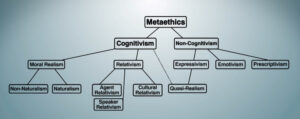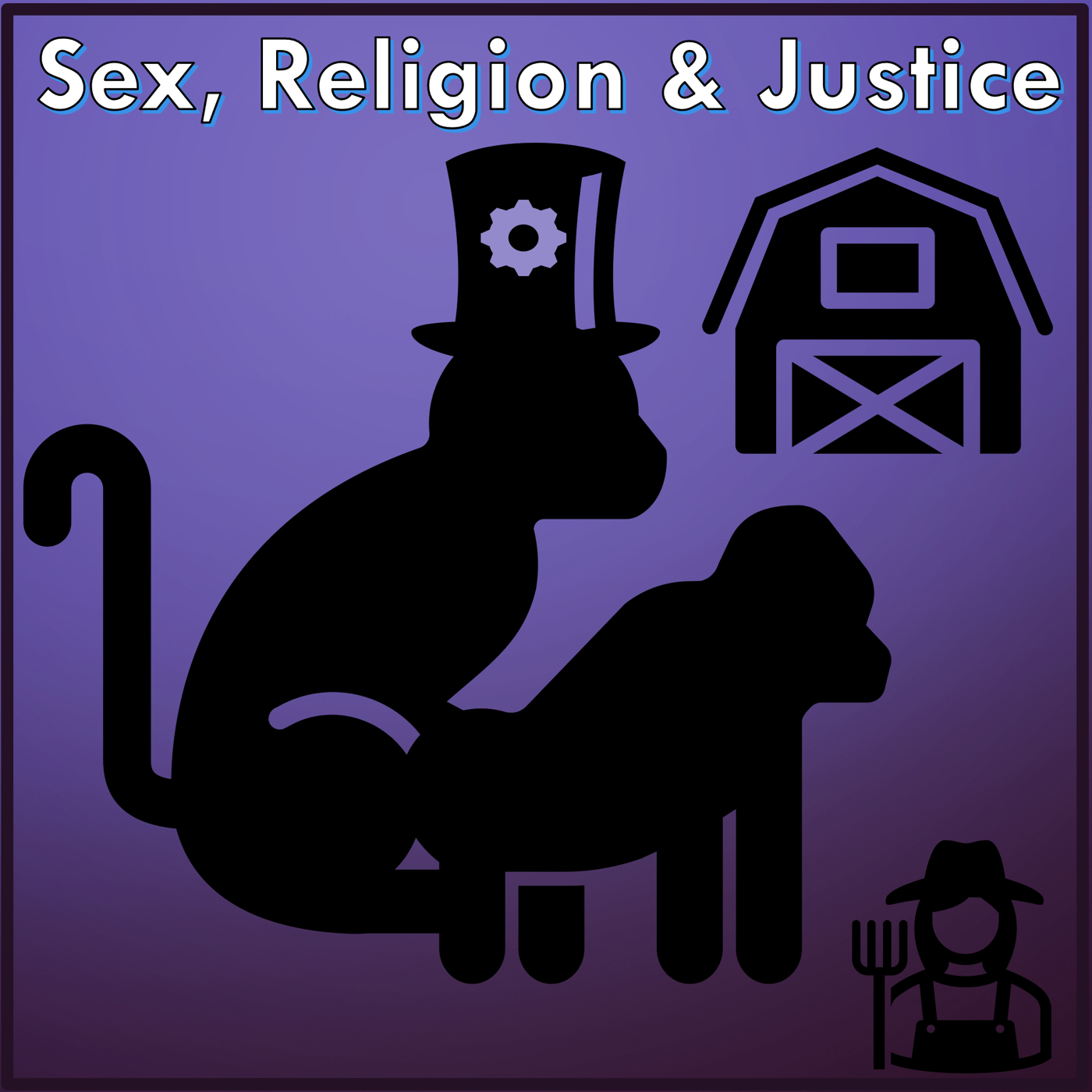The maximization of awesomeness is a call to the cultivation of flourishing ecosystems of every scale. What is an ecosystem? Normally, when I think of an ecosystem, my mind goes to an image of a lake with a marsh, some frogs, bugs, fish, flaura and fauna – all in some sort of balance. I think of ways small changes can affect whole ecosystems. Too much algae, and fish die and smell. Add fertilizer to a nearby field, and plants grow. The fertilizer in the field may affect the marsh. What does the word “ecosystem” make you think of? There are other types of ecosystems. Ecosystems of justice, for example. The word economy has the same root as ecosystem. You could think of a financial ecosystem. Make a small change in an economic system like raising the cost of insurance or providing a stimulus and it can have dramatic affects. Today, we’re going to set out on a journey towards a balanced ecosystem of theories – economic theories, moral theories, religious and cosmological theories. Our goal will be to explore how even competing theories can work together to maximize awesomeness. We’re going to begin where we left off last time, talking about women’s rights. In the coming episodes we’ll be talking about sexual and reproductive freedom, as well as same and other sex issues as they’ve been treated through history. In discussing their pros and cons, we’ll be establishing a theory of theories as we go. Ready?

Particularly in the West, a lot of sexual oppression and abuse is blamed on religion. The idea that man is a type of primate whose species, homo sapiens, came into being about two hundred thousand years ago in a paleolithic era has been rejected by fundamentalists in the Judeo-Christian traditions as a demonic lie. Humans aren’t animals, they’ll insist. I won’t be addressing the creationist controversies here – ever. Instead, I’m going to find the pros and cons in each paradigm as I reconcile irreconcilable visions with the Multiverse. That means, to begin with, that I’ll entertain the theory of Christopher Ryan and Cacilda Jethá, that man is more closely related to the chimpanzee and bobono, than the chimpanzee and bobono are related to any other primate, including the ape. Ryan observes that chimpanzees mate an average of four times an hour during estrous with up to twelve males per day. A female in estrous seeks sex, probably not thinking about why, because their opportunity to reproduce is highest during that time frame. It serves the survival of the species. Chimps have frequent sex with multiple partners about 40% of the month. Bobonos 90%. Humans 100%. Ryan’s theory is that we are more like the highly promiscuous bobono than we are the relatively monogamous gibbon, with whom we share much less common DNA. As a result, we shouldn’t feel so ashamed that we so often have sexual thoughts that might betray our marital partner. We should consider open relationships. There are lots of gay and bisexual chimps too. According to Ryan, if we have same sex tendencies, we should’t feel guilty about it. We should accept ourselves the way we are.
We need to consider the full implications of this assumption. According to Ryan, humans had no sense of monogamy during the better part of the paleolithic age. It wasn’t until the neolithic era, when we transitioned from hunter gatherer tribes to settling on farms that monogamy ever became a thing. For some perspective, that’s just the last 5% of the history of homo sapiens. If we are naturally adapted to a hunter gatherer tribal lifestyle, rather than an agrarian one, what does that mean for us? What exactly happened? What exactly is the difference between the paleo and neolithic periods?
If we accept Ryan’s speculations, hunter gatherer tribes crossbred with competing tribes whenever given the opportunity. Sharing among clans was a matter of what he calls “forced egalitarianism.” Certainly food and basic goods were shared among tribes, to keep peace. How about sharing some of that Whooly Mamoth instead of wasting the left overs? Presumably, sex was no different. There would have been genetic reasons for wanting to share. In fact, one sex historian, Reay Tannahill, said that our need for survival always inclined us away from sex with family, towards variety, making incest what she called “the first taboo.” Common among many mating habits of mammals, we rejected incest before we ever knew why. Same sex relations were about as useful as incest and adolescent pederasty ever were. In our sexual zeal they often happened but the genes that inclined us to such behavior served little or no purpose for survival.
Along with the evolution of hominids during that period was the evolution of language. The historical record begins with what we can discern from the bones and tools we dig up, then the paintings we find, and only in the last half of the neolithic age do we find any writing. We suppose that our brains were evolving, but the archeological record shows that our brains have been shrinking, down 10% in size over the past 40,000 years. We think we’re smarter because of technology but technology arose through improving communication in an age of population growth. We were increasingly less alone, increasingly more social and socially inter-dependent. It was population growth that brought on the age of agriculture and commerce. It was the size of our population, not the size of our brains that introduced us to capitalism, and to the ownership of property that could only be seized by an enemy, or traded.

The world changed. Men formerly hunted wild game, but now they merely corralled animals. Women had formerly been equals with men except in times of scarcity, like the ice age, when they may have been dependent on men to hunt under harsh winter conditions. But in the neolithic age, it was women who were dispensable. In the new age of corralling animals into pens, women were no different than livestock. They were made use of for what they could produce. If they didn’t help till the land and cook the bread, and produce child laborers, they were lashed. Many broken arms of neolithic women have been found, possibly caused by protecting themselves from being harshly beaten. Animals had to be tamed. So did women.
So the theory goes. The neolithic age – agriculture and capitalism – brought on patriarchy and slavery. It was property. It was settlement. The physically strong ruled the physically weak. As civilizations grew this new tradition of viewing women and children as property grew with it. Social conventions arose, gradually writing patriarchy into law.
Contrast this with the state of man before agriculture and commerce. Prior to the knowledge that sex made babies, there was no sense of paternal responsibility. A woman was naturally in charge of the clan. The words “my son” had no meaning. But when women came to be understood as vehicles for reproduction in the context of farming, they were like dirt. The power of fertility was in the seed. Progeny worked farms. It had value if it could do work, producing more.
No one understood this better than the Hebrews, whose 613 laws consistently promoted reproduction and condemned behavior that skirted it. Whether Onan’s sin was masturbation, coitus interuptus or a failure to honor his obligation to father children for his sister-in-law after his brother’s death, God’s judgment of Onan was his sin against reproductive obligations. If you don’t know who Onan was, read Genesis 38. But the Hebrew Law didn’t stop the Hebrews from having sex with prostitutes, and if it wasn’t prostitutes, many wives and concumbines were accepted, in the days of the early patriarchs and kings, at the least.
Other cultures were sexually liberated in comparison to the Hebrews. In the orient, same sex activity was socially accepted, as it was in Greece and Rome. In Taoism the male yang is strengthened by resisting orgasm. Sex is a spiritual exercise. The Hindu Kama Sutra also seeks to cultivate sexual energies for spiritual union with the divine. There is little sense of guilt and shame, as is found in the West, but that doesn’t mean women were treated as equals after the agricultural age there either. It was agrarian commerce that in almost every culture was relegating the role of wife to that of child-bearer, appreciated for little else than for reproduction, for nurturing of children and for housekeeping. Women who did not wish to be oppressed sometimes found prostitution a form of advancement. Japanese Geishas were highly respected for their worldly knowledge, not just sexual expertise. Babylonian herimtu advanced themselves as sacred prostitutes. The Egyptians priestesses, the naditu were literate, while Hebrew wives were not. The Greek heterai were highly admired temple prostitutes, worthy of joining mens only clubs. Roman wives were exceptional in the privileges over property they held. But men were permitted to have sex with anyone, while women kept their dallyings more discreet, especially after the moral reforms of Augustus, who set the pace for the Roman Empire in 27 BC.
In all of this, homosexuality and promiscuity among men was morally neutral. In Greece, sex with young boys had been normal in the Symposium, so long as the young aspirants were pubescent, (not that there weren’t abuses of those younger). Sexual activity between women was also accepted. The island of Lesbos is where we get the term “lesbian”, but that wasn’t about sex so much as poetry, some of which suggests some woman-to-woman love. Women were known for their intelligence and that appears to have been the main attraction of Lesbos. Love among females was widespread but lesbian acts were increasingly condemned in the first century with the rise of gnostic anti-materialism.
To understand how Christianity and Islam, in particular, became misogynist, some understanding of gnosticism is needed. With gnosticism, in its many forms, the material world was considered a deterioration, a distortion, impure, and poisonous to the attainment of spiritual knowledge. The flesh was denounced. I think gnostic anti-materialism is best explained as an anti-Greek experience in an age of Roman power.

Here’s what I mean. While it may well have been true that our tendency as homo sapiens was to act like the promiscuous bobono, the superstitious Romans, seeking spiritual superiority over those they had conquered, renounced the flesh – everything about it, especially sex. Then, being weak minded, they despised their women and anything weak. Oddly, their own desire was was perceived as a weakness. Weak-minded, they treated their wives as skapegoats when the suppression of sexual instinct proved futile. Add to this sort of heavy guilt trip the fact that this sort of moral progress or superiority was supposed to please the gods. Failure to transcend the flesh meant being guilty of the fall of the Roman empire by its enemies, and for calamaties like Pompei and the eruption of Mount Vesuvius. The Caesars placed blame on the immorality of Roman citizens, and when the Roman Empire spread out to Constantinople to the East in the early fourth century, the Roman anti-Hellenist anti-materialist inclination compounded Christian attitudes against the flesh.
It was because of this neo-gnostic bent that the later church presumed that the apostle Paul was single by choice. In reality, when he suggested that others be single as he was, he was most probably addressing widows as a widower. I doubt he could have qualified to be a member of the Sanhedron if he had been unmarried. I’m pretty certain he was speaking to the unmarried generally in 1 Corinthians 7:8, as well as to the widows. In saying τοῖς ἀγάμοις καὶ ταῖς χήραις – to the unmarried and to the widows, two ancient translations have τοῖς χήροις (to the widowers) here, he was referring to himself. I think he was dealing with the question of whether widows and widowers should remarry.
Anyway, if Paul wasn’t as pro celibacy as Catholics later made him out to be, gnostic anti-materialism still permeated the Christian ethos. Women and children were very much the property of the head of household, which was always the husband and father. It may well be true that the husband was to give himself to his wife just as the wife was to give herself to her husband. It may be true that the husband was subject to Christ, just as the wife was subject to her husband as to Christ. But in real world terms, she was on the bottom rung of the totem pole with their children, and he was probably not much of a Jesus. Subjection and abuse were typical. If Jesus was more tolerant of adultery than the Jews before him, it wasn’t a matter of being a more lenient teaching either. He may have said nothing specifically about masturbation, but he seems to have sided with the other rabbis of his day in saying that even thinking about someone other than one’s spouse was an adulterous act. In practice, some took this seriously. The early third century Christian expositor Origin was probably among the many who castrated themselves before the practice was outlawed in 325 A.D.

Christian sexual suppression gets worse. However serious the oppression of women in the church may have been – homosexuality always seems to be singled out as the ultimate abomination. Talking to today’s evangelicals, we might think it is the only type of sin God gets really mad about. To call something an “abomination” you’ve really got to detest it. “Abomination” has such an onomatapoetic sound. But hold on. Long before Paul used the term, the writer of proverbs was describing a God who found “haughty eyes” an abomination. That’s it. All you needed to do was be arrogant and proud, or have a lying tongue, and you were in God’s ultimate dog house, locked outside of the kingdom for all eternity. Never mind the murderers. You were an abomination. It was easy to be considered depraved and deplorable. No one needed to commit a single gay act.
The idea of an angry God and one who condemns everything material as fallen and rotten seem to go hand in hand. Before Saint Benedict started inflicting wounds on himself to tame the inner beast, and before Christians cooled themselves in tubs of ice or whipped themselves to drive out their evil thoughts, the gnostics had invented a Jesus that was born as an adult and who didn’t actually suffer when he was crucified. It was anti-materialism. Some gnostic Christians said Jesus wasn’t really even human. He was God appearing human only. God was separate from man. And with that ever-widening gap between God and man, it wasn’t long before Martin Luther singled out one passage of Paul – “we have all fallen short of the glory of God.” He wasn’t alone. John Calvin subsequently built the Institutes of the Christian Religion on two words – “total depravity.”
Never mind that if there was none righteous, not even one, that that would include Jesus too. That there was nothing good in man at all was the prevailing Christian mindset everywhere a person turned, whether in Catholic self-flagellation or the Protestant disdain for intermediaries. It follows that women were the worst among men. In such an atmosphere, it shouldn’t be surprising so many would be burned at the stake, accused of witch craft if they offered a single word of criticism. Men couldn’t face their own sin. Adam blamed Eve. She suffered the brunt of the self-abuse. Homosexuals, of course, these were less common but certainly burned in hell.
So what can we learn from all this? What theory of justice is this? Is there anything good we can draw from it?

I think there is. First, it’s obvious that the love and mercy of Jesus is missing in this depressing picture. If Maximized Awesomeness is true, we could safely look for a more welcoming God, one who doesn’t hate everything about us. The idea of an angry God is something we can attribute to human imagination and projection. The intolerance of sin doesn’t need to be confused with anger and condemnation. The picture of the Multiverse I’ve share up to now, has involved a two step process to do away with the sin problem through the maximization of awesomeness. In step one, we find evil and find ourselves responding to it in every possible good way, so that every good act of our free will can be part of reality. In step two, we realize that the evil itself, to which we may have responded, wasn’t actually there. It was somehow illusory – something uploaded to our minds – a figment of our imagination – even the things we think we ourselves have done. We didn’t do them. They are illusory memories. We are not sinners. We are points of light and grace sharing in the glory of God timelessly, reborn as heirs of glory. We recognize this point secondarily, treating sin and evil as if it were real. Such would be the love and goodness of God that sin and evil should be removed from us as far as the east is from the west – so that it never happened. It sounds like an imaginary theory, of course. But I repeatedly showed why this had to be true if Maximized Awesomeness was true throughout the beginning of Season One. And I proved Maximized Awesomeness is true in Pamalogy 101.
Second, given these first step constructs, it is possibly true that there is no way to overcome the inclination to break our diets until our appetites are curbed, (whether it’s food or sex we’re talking about). Beating each other up, if we fail, isn’t going to help. And third, the idea that God will condemn us as a nation because we fail to curb our appetites, this really isn’t fair. Whether we blame a carnal nature, or DNA that is similar to the promiscuous bobono, doesn’t really matter. What does matter is the steadfast mercy and love of God. And if people have rejected traditional religions, who can blame them? Don’t tell me about the love of Jesus. Show me. That’s why I w0uldn’t be too worried about God giving up on our nation because it has abandoned its Christian roots. It might be a slippery slope fallacy to complain about a right wing theocracy if prayer was restored to schools, but to continue sexual oppression of women and of those who want to live according to non-traditional lifestyles would mark a different sort of territory, one that points to the restriction of another very vital value – sexual freedom.
We have ‘t talked about reproductive freedom yet. I wanted to cover it in the broader context of freedom and law generally, once we had covered the history of sexual oppression and repression. I could only trace a few key ideas here but I think I’ve said enough at this point to make it clear that to live a life where awesomeness is optimized, we’re going to be looking for a balance between personal liberty and optimal consequences – optimal consequences both for individuals and for the societies we live in. Obviously, I want you to be free to do as you choose but I don’t want you to be free to hurt me or your neighbor. I care about us too. This is why in talking about reproductive freedom, we can’t leave out whether or not a fetus should have any rights that might override a woman’s freedom. It may be that you’ll conclude that they shouldn’t have any rights after we’ve talked it through, but it’s not a conversation that can be ommitted if justice as fairness and maximized aweseomeness really matters to you, as I assume it does.

This leaves us with a few sets of values in conflict that we’ll want to balance. In the next few episodes, we’re going to spell out a metaethical system – a multiversal metatheory for sex, religion and justice. We’ll see how freedom can be restrained by principles of justice while tolerating diverse religious viewpoints. We know we can’t leave freedom completely untethered without endangering ourselves, but exactly how tethered should it be tethered, and what should we tether it to? These questions are going to lead us through a quick breakdown of political and ethical philosophy. We’ll start with two ideas introduced by Aristotle – functionalism, and the golden mean of virtue. We’ll see how the Catholic Church latched onto Aristotle’s functionalism in its sexual obsessi0n. We’ll touch on Kantian ethics after that, before moving on to Neitzsche, Kirkegaard, Sartre and Foucault. We’ll also talk about Karl Marx and John Rawls. And before all is said and done for Season One, we’ll have fully treated an assortment of woman’s issues and laid a framework for a system of ethics, economics and justice, unique to Pamalogy, which we will refer to as a “pamalonomy.”
In Season Two we’ll go deeper and lighter at the same time, as we start getting more people to participate. We’ll see how that goes. Up until now, I’ve had very little support. Expect to see major revamps on the web site and courses in Season Two. There should be some nice improvements and we may even start advertising.
Of course, we can’t advertise until we have supporters. So far, nobody knows we’re here. So we’re going to need a cash injection of some sort pretty soon to get the ball rolling. Maybe that’s where you could come in. We’ve got our Patreon site for those who want to contribute a few dollars a month. And there are sponsorhips available. A sponsorhip basically means co-branding. The sponsor pays to advertise and we target the ads to both where we might find our own listener and reader prospects and where the sponsor will find customer prospects at the same time.
You will soon see how pamalonomies are connected to incubators. The Pamalogy Society will not only provide teaching in awesomeology, but also incubate high impact projects. As a 501(c)3, we will support a strategic set of projects that help support one another. I’ve spoken with you quite a bit about the CounterChecker in previous blogcasts so I won’t repeat that here. We need to raise $1.4 million for that project. So far, we haven’t raised any money at all. One reason for the slow start is that we have no money to advertise with. We need to get the word out that we’re here. It would helpt if we had a better platform of communication to begin with.

This is where a second project might be useful. As you may know, I drive for Uber and Lyft to pay my bills. I’ve done over 30,000 rides between the two companies. I know a little bit about the driving industry. Well it just so happens that I lead and partipate in several rideshare driver groups online and there seems to be unanimous support for the idea of beginning a driver owned rideshare company, so we are in the process of developing a white paper to outline the facts behind what would make an optimal program to compete against Uber and Lyft. Before, I close, I’m going to share just a few features.
Let’s start with the main pain points.
1. Drivers aren’t paid enough.
2. Riders are paying too much.
3. Shareholders are watching Uber and Lyft eat their profits away in an effort to gain market dominance.
4. Employees see the writing on the wall so they’re draining what’s left.
So here is the opportunity. Bring accountability back to shareholders by limiting ownership to drivers, riders and delivery customers. Let drivers have as many shares as the miles they drive and passengers have their own class of shares based on their own miles driven. Delivery customers get their own separate class, as well, based on their purchase levels. Each group then gets to vote based on their quantity of shares, when polls come out and elect board members. Each group has a direct ongoing input into what features the app and service will provide. Cutting out the middle man raises driver pay and lowers passenger and delivery customer costs. With ongoing feedback it gives each group what they want.
That’s the general idea. To get it started, the group that’s already been started just needs to go viral. So here’s our current need. Organically, social media is of no particular help in that regard. A sponsor, on the other hand, could pay to advertise the group and start an email list. The idea is to have a million members in the group, then have each member pay $10/month in member dues to raise cash for the startup. Once the money has been raised, then we will build the app, beta test it, and then immediately compete against Uber, Lyft and the other transportation and delivery companies.
The program currently has no name, because we want the drivers to decide on that. What we need right now is quite simple. We need some advertising dollars. We could do that with one sponsor. Could that be you? Let us know. If you sponsor the rideshare co-op and we start the best transportation network company ever, every other program the Pamalogy Society supports will be easy to begin because we will have a huge group of people we can communicate through since we will own the email list as it original sponsor. I myself also will be able to do this work full time, instead of taking 80 hours/week to drive. That’s what I mean by the word “strategic.” It will mean more content here and it will mean more hours dedicated to the projects we support. It will also mean creating a platform for communication. This is vital as up until now, hardly anyone has ever heard of Pamalogy.
That should give you a pretty good idea of our plans. I’m looking forward to hearing from you. Did you put together the list of things you’d like to do before you die, like I asked you to? I want to see your list. My list is at JamesCarvin.com. Write down your list and send me the link. Imagine how much we could help each other!
Ciao!
URL for sharing this transcript page: https://pamalogy.com/2022/07/11/multiversal-metatheory-sex-religion-and-justice
URL for sharing this podcast: https://player.captivate.fm/episode/9c4c31ec-8035-4300-b6e2-a4d9fc70b7ec
URL for sharing just the audio file: https://podcasts.captivate.fm/media/0f1feaaa-22b3-46ec-bc96-794ba6185226/Episode18-SexandJustice-converted.mp3
Previous: Women’s Rights in the Multiverse
Up Next: Bad Sex



